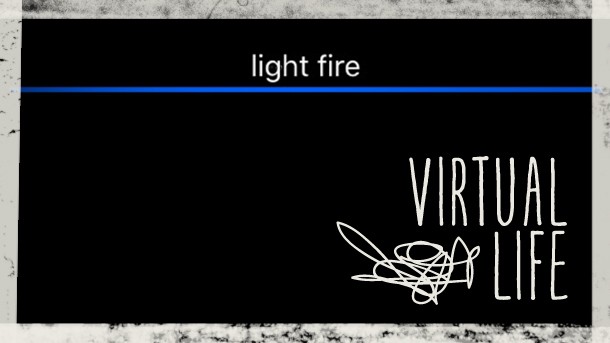Our extra-large special edition is here. Subscribe today and receive the 25% longer issue at no extra cost!
The Virtual Life – Breathing Life Into The World With A Dark Room

A Dark Room begins quietly. There are no graphics to speak of. No characters in view, no sounds. Only two sentences: The fire is dead. The room is cold.
Why are we in this room? The game doesn’t explain and, truth be told, it doesn’t really matter, does it? I think most of us have been in this type of room before – physically, emotionally, and mentally. The room is more than a room. It’s capital-Z zero and all the horror that goes along with that digit.
I gave up a lot when I moved to Minneapolis for this job. Friends, relationship, comfort, burned a few bridges, the whole nine yards. I know other people who have made sacrifices as well for their careers or for loved ones. They paid the cost, whatever it was. Life savings. Divorce. Health. There’s a certain level of terror about hitting rock bottom and finding yourself in free-fall but there’s also a thrill as well – the realization that anything can happen now.
Your first action in A Dark Room is one of creation (as are most of your actions that follow). You light the fire. Time passes. You stoke the fire. Soon a stranger appears, a woman. She shares the room with you. You stoke the fire. Eventually you leave the room and find yourself in a forest. Other people wander into your area, vagabonds. They become your community. You work together to gather wood to build huts and lodges; you lay traps to capture animals for food and fur; you set up trading posts. Slowly, second by second, action by action, the post-apocalyptic world of A Dark Room comes into view.

Perhaps the most remarkable quality of A Dark Room is how it creates such a foreboding atmosphere and detailed world with nothing more than a few prompts, stats, and lines of text. The universe that the game is situated in is grim, with forests being prowled by monsters that crave human flesh and people who toil day in, day out just to keep the community alive. However, there is a tangible sense of power from being able to slowly build an empire from a pile of sticks, so at the heart of A Dark Room I think there’s actually a core of optimism: We can always rebuild.
2016 was a rough year for a lot of people, particularly those who still cling to the hope that love and acceptance can overpower the forces of tyranny and bigotry. As I started the new year, I was struck by how perfect A Dark Room was for me, still reeling from both personal and national events, as a therapeutic device. I sat in my family’s home, legs stretched across my bed, fingers tapping away incessantly on my phone as I took charge of my community of despairing villagers. So many games (many that I love) are about destruction and laying desolation to enemies through brute force, but the past few months have been a hard sell for those sorts of games with me, especially when all I have to do is turn to a headline on a screen to see some combination of murder and mayhem happening in our world. A Dark Room’s focus on creation resonated with me: It was timely escapism, but it was also a reinforcement of my own true world view when I needed it.
I think people are good. They are often scared into violence or bad decisions, but I do think most people are intrinsically good or are at least capable of becoming good. Spending some time ushering things into creation, even in a virtual space, was a good reminder of that. As 2017 gets underway, I’ve decided I’m going to have to work twice as hard at making the real world resemble the ideal one I have in my mind as much as I can. It’s a long road, I know. As A Dark Room says:
The fire is dead. The room is cold.
Let’s get to it then. There's work to be done.
An iOS version of A Dark Room is available for purchase, but you can also play the earlier prototype version in your browser by going here.


Get the Game Informer Print Edition!
Explore your favorite games in premium print format, delivered to your door.
- 10 issues per year
- Only $4.80 per issue
- Full digital magazine archive access
- Since 1991









